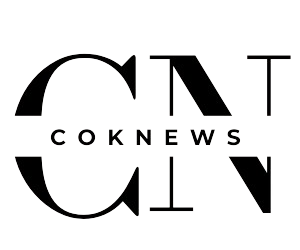Collaborative assignment writing can be a rewarding yet challenging endeavor. Working with others allows for diverse perspectives and ideas, but it also requires effective communication and coordination. Whether you’re tackling a group project for school or collaborating in a professional setting, here are some essential tips to ensure a smooth and productive writing experience.
1. Establish Clear Goals
Before diving into the writing process, it’s crucial to establish clear goals for the assignment. Discuss with your group what the main objectives are and what you hope to achieve by the end of the project. This could involve outlining the specific topics to cover, the depth of research required, and the desired format of the final document.
Tip:
Create a shared document where everyone can contribute their ideas. This collaborative space can serve as a brainstorming platform to define the scope and goals of your assignment.
2. Assign Roles and Responsibilities
To streamline the writing process, assign specific roles and responsibilities to each group member. By clarifying who is responsible for which sections, you can minimize confusion and ensure that everyone knows what is expected of them.
Common Roles:
- Researcher: Gathers information and data on the topic.
- Writer: Focuses on drafting the text.
- Editor: Reviews and revises the content for clarity and coherence.
- Project Manager: Keeps the group on track with deadlines and schedules.
Tip:
Consider each member’s strengths and preferences when assigning roles. This can enhance motivation and productivity, leading to a more effective collaborative effort.
3. Develop a Timeline
Time management is crucial in collaborative writing. Create a timeline with deadlines for each phase of the project, including research, drafting, and editing. This will help keep everyone accountable and ensure that the assignment is completed on time.
Tip:
Use a shared calendar or project management tool to track deadlines and progress. Regular check-ins can also help maintain momentum and address any issues that arise.
4. Communicate Effectively
Effective communication is the backbone of any successful collaboration. Establish a communication plan that outlines how and when group members will share updates, ask questions, and provide feedback. This could involve regular meetings, emails, or a dedicated chat platform.
Tip:
Set up a group chat or forum where members can easily discuss ideas and share resources. This can help keep everyone engaged and informed throughout the writing process.
5. Utilize Collaboration Tools
In today’s digital age, there are numerous tools designed to facilitate collaborative writing. From cloud-based document editors to project management applications, these resources can enhance your group’s efficiency and organization.
Recommended Tools:
- Google Docs: Allows real-time editing and commenting, making it easy for everyone to contribute simultaneously.
- Trello: A project management tool that helps organize tasks and track progress.
- Slack or Microsoft Teams: For team communication and file sharing.
Tip:
Familiarize your group with these tools at the outset to ensure everyone is comfortable using them, which can minimize disruptions later on.
6. Foster a Positive Group Dynamic
A positive group dynamic can significantly impact the collaborative writing process. Encourage open dialogue, respect diverse opinions, and create an environment where all members feel valued and heard.
Tip:
Consider team-building activities or icebreakers at the beginning of the project. This can help build rapport and trust among group members, making it easier to collaborate effectively.
7. Conduct Thorough Research
Research is a critical component of any assignment. Collaboratively explore credible sources, and make sure to share findings with each other. This can lead to richer content and a deeper understanding of the topic.
Tip:
Maintain a shared reference list or bibliography as you conduct research. This can help keep track of sources and ensure that everyone is on the same page regarding the information being used.
8. Draft in Stages
Instead of attempting to write the entire assignment in one go, break the drafting process into stages. Each member can focus on their assigned sections, allowing for a more manageable and less overwhelming approach.
Tip:
Set specific milestones for each stage of drafting. This not only makes the writing process feel less daunting but also allows for regular feedback and revisions along the way.
9. Review and Revise Together
Once the initial draft is complete, set aside time for group reviews. Collaborative editing is crucial for ensuring that the final product is cohesive and polished. Each member should read through the entire document, providing constructive feedback and suggestions for improvement.
Tip:
Consider using a peer-review format where each member focuses on specific aspects, such as structure, clarity, and grammar. This can lead to more comprehensive feedback.
10. Respect Individual Contributions
In a collaborative effort, it’s essential to acknowledge and respect the contributions of each group member. Give credit where it’s due, and make sure that everyone’s work is represented fairly in the final product.
Tip:
Consider adding an acknowledgment section in your assignment to recognize the efforts of all group members. This fosters goodwill and encourages future collaboration.
11. Practice Conflict Resolution
Disagreements and conflicts can arise in any group project. It’s important to address these issues promptly and constructively. Encourage open discussions where all viewpoints can be shared and considered.
Tip:
Establish a conflict resolution strategy at the beginning of the project. This could involve appointing a neutral mediator or outlining steps for addressing disagreements.
12. Finalize and Submit
After completing the revisions and finalizing the document, ensure that all group members review the final draft one last time. Double-check formatting, citations, and any specific submission guidelines provided by your instructor or organization.
Tip:
Decide on a final submission plan well in advance to avoid last-minute issues. Make sure everyone knows how and when the assignment will be submitted.
Conclusion
Collaborative assignment writing can be a highly enriching experience when approached thoughtfully. By setting clear goals, assigning roles, maintaining effective communication, and fostering a positive group dynamic, you can navigate the challenges of working together and produce a high-quality final product. If you ever find yourself needing assistance with your collaborative projects, remember that many resources are available to help you succeed. For instance, if you’re looking to get help with assignments in Canada, there are various platforms and services tailored to provide guidance and support tailored to your needs.
By following these tips, you’ll be well on your way to mastering the art of collaborative writing, ensuring that your group projects are not only successful but also enjoyable.




